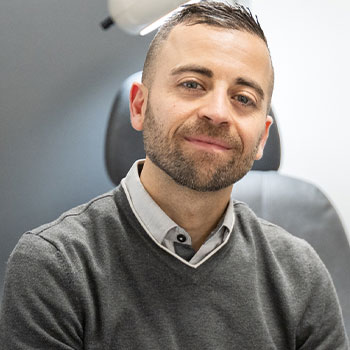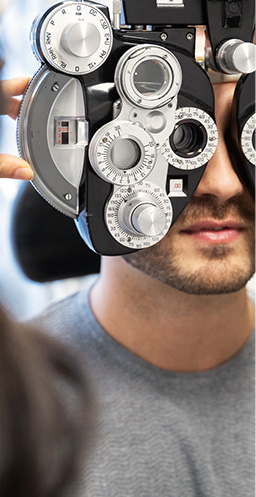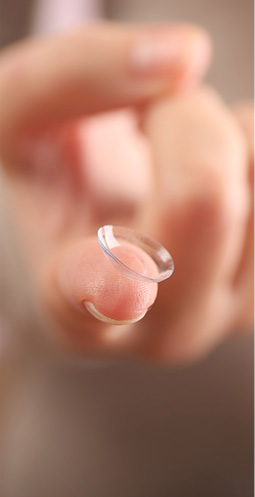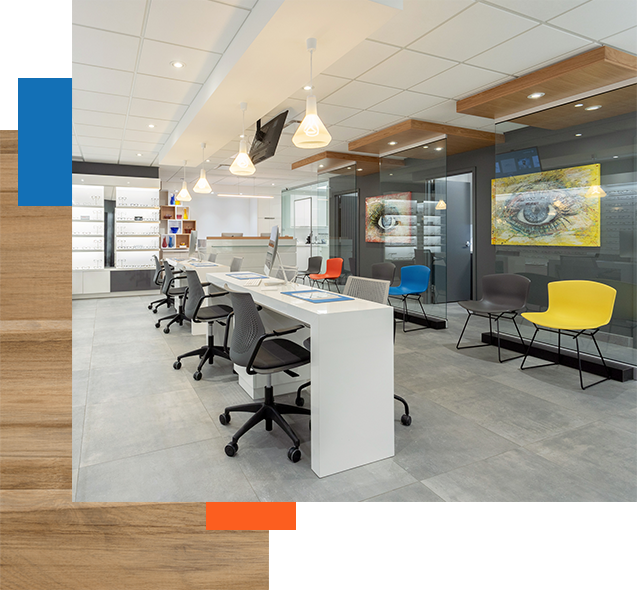Vision problems are a common issue for many people, no matter their age or lifestyle. Refractive errors—a problem with how your eye refracts light—are one of the most common causes of blurry vision.
There are 4 types of refractive errors:
- Myopia, or nearsightedness, where your nearby vision is clear but your distance vision is blurry
- Hyperopia, or farsightedness, where your distance vision is clear but nearby vision is blurry
- Presbyopia, a type of farsightedness that occurs with age as the lens in your eye becomes less flexible
- Astigmatism, which causes blurry vision at all distances due to an irregularly shaped cornea. This can occur alongside any other refractive errors.
Hyperopia and presbyopia are 2 of the most common types of refractive error. But what’s the difference?
Presbyopia and hyperopia may present similar symptoms, but they’re fundamentally different conditions. Hyperopia typically begins to develop in early childhood and affects the physical shape of the eye, while presbyopia develops as part of the natural aging process.
What Is Hyperopia?
Clear vision relies heavily on the shape of your eye and cornea. The cornea—the clear tissue at the front of the eye—bends light and focuses it toward a singular point at the back of the eye. However, if the cornea is curved incorrectly or the eye is too long or short, your visual system struggles to make a clear image. This situation is called a refractive error.
Hyperopia, more commonly known as farsightedness, occurs when the eye is too short or the cornea has too little curvature. These structural anomalies cause light to focus behind the retina instead of directly on it, which makes it more difficult for your eye to focus on nearby objects while keeping your distance vision clear.
Recognizing the Symptoms of Hyperopia
Unlike myopia or nearsightedness, which is easily recognizable by constant squinting and blurry distance vision, hyperopia can be difficult to diagnose without an optometrist’s help. However, try to keep out for the following signs in your child:
- Struggles to focus when performing tasks like reading and writing
- Frequently rubs their eyes or appears fatigued when reading or doing close work
- Avoids activities that require close vision, such as drawing or playing with small toys
- Complaints of headaches or discomfort after prolonged reading or screen time
If you notice any of these signs, it’s crucial to schedule an eye exam as soon as you can. Early recognition lets you intervene to get your child the help they need for a higher quality of life.
What Is Presbyopia?
Presbyopia is a natural part of the aging process, affecting many people over the age of 40. Unlike hyperopia, which is related to the shape of the eye, presbyopia occurs due to the hardening of the lens inside the eye.
When you’re younger, this lens is much more elastic, and can easily change shape as needed to help you focus at different distances. However, over the years, this lens starts to lose the ability to change shape and focus on nearby objects, making close-up tasks much more difficult.
Presbyopia typically progresses slowly, but can often become disconcerting—especially if you’ve never experienced a vision problem before. Presbyopia often leads to a person needing special eyeglasses, like bifocals or multifocals, to address this unique change in their prescription.
The Early Signs of Presbyopia
It can be difficult to recognize the early signs of presbyopia. You may begin to experience slightly blurry vision or minor headaches whenever you try to read. However, try to keep an eye out for the following:
- Holding reading materials at arm’s length to see clearly
- Difficulty reading small print in low light
- Experiencing eye strain or headaches after close work
- Blurred vision at normal reading distance
- Needing brighter lighting for reading or close tasks
- Frequent adjustments of reading position to find a clear spot
It is also important to note that a patient may have hyperopia and presbyopia at the same time! If these symptoms sound familiar, you might be developing presbyopia, and it’s time to see your optometrist.
How to Treat Refractive Errors
Refractive errors are common, and can easily be addressed with the help of an experienced eye care professional. For both hyperopia and presbyopia, eyeglasses and specialty lenses can be used to give you clear vision—however, the approach does vary slightly.
Treatment with Eyeglasses
For hyperopia, you can use eyeglasses with convex lenses that refocus the light entering your eye, or you can choose contact lenses if you prefer not to wear glasses. Both of these options adjust light before it reaches the eye so that it can refract properly onto your retina. With hyperopia, a single prescription is usually enough to correct your vision.
However, presbyopia is a little trickier. You may need bifocals, multifocals, or progressive lenses, all of which have several prescriptions built into one lens. This helps correct your distance vision and nearby vision simultaneously without switching between glasses, and offers a convenient solution to your blurry vision.
Another option is using prescription single-vision reading glasses. This will correct the vision at nearby distances but will make images blurry across the room so the patient will need to take them off when not reading.
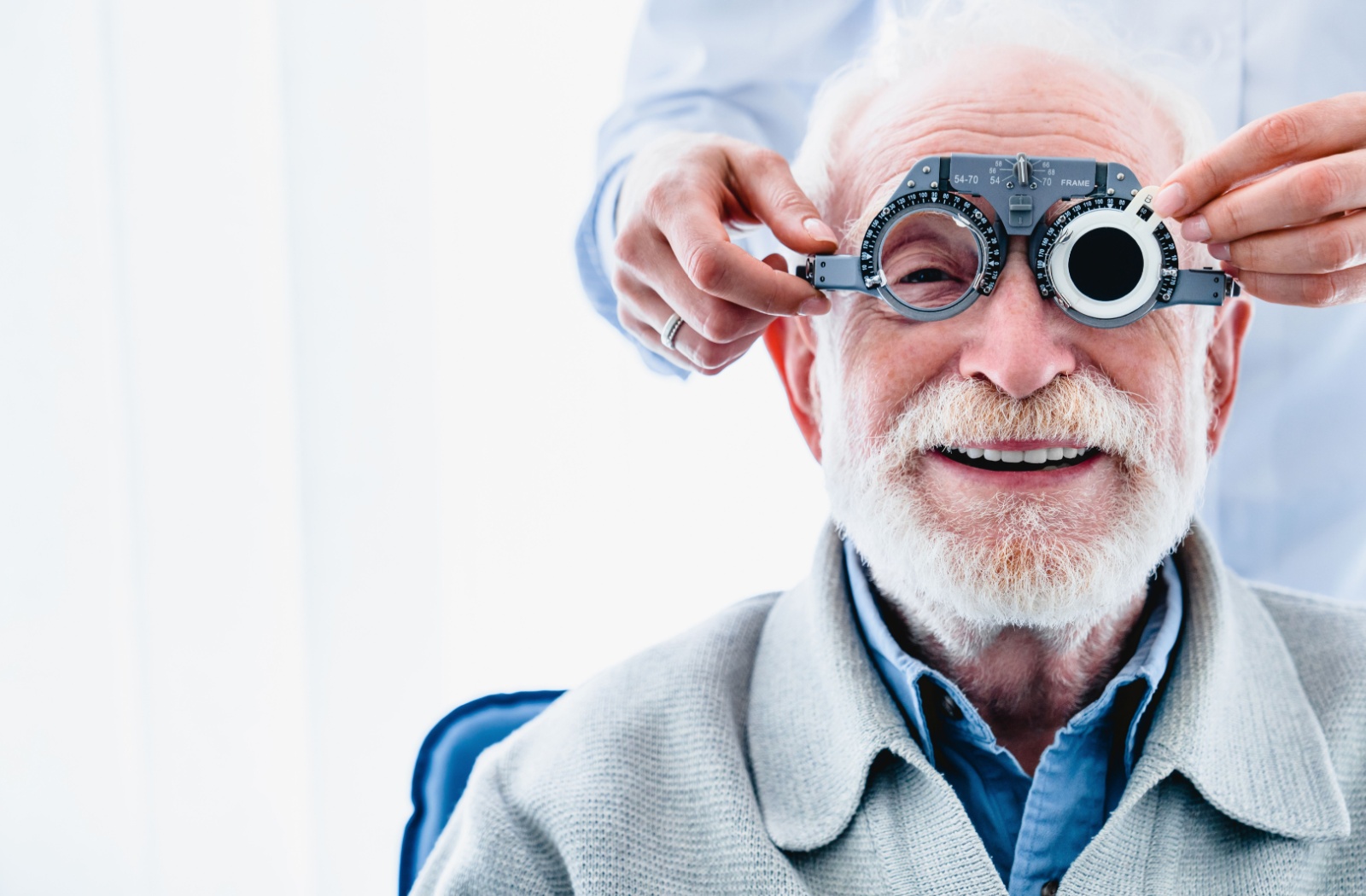
Treatment with Contact Lens
Hyperopia can be treated with contact lenses fit by your optometrist. These are single-vision contact lenses and are available as either monthly replacement lenses or daily disposable lenses.
Presbyopia correction with contact lenses requires a slightly more complicated lens. Multifocal contact lenses are available—these correct both distance vision and reading vision at the same time. These different focal powers in each lens are designed to correct vision at all distances.
This may require a little more time during the fitting process. Your optometrist will need to find the correct lens that offers proper balance at all distances, without compromising your distance or reading vision.
Refractive Surgery for Hyperopia & Presbyopia
If you’re looking for a longer-term solution to your refractive errors, you may be a candidate for a refractive surgical procedure. This offers a permanent solution by reshaping the cornea or replacing your natural lens with an implant so the eye can refract light properly, without the need for corrective lenses.
The surgical correction options for refractive errors include:
- Laser surgical correction (LASIK or PRK)
- Refractive lens exchange (RLE)
Laser Corrective Surgery
Laser corrective surgery can correct small amounts of hyperopia. However, a patient with larger amounts may not be a candidate, as the prescription may regress over time. Part or all of the prescription may return, compromising the results of your surgery. Laser surgery is much more stable and predictable for patients with myopia and astigmatism.
For presbyopia, corrective surgery is typically not recommended if you aren’t experiencing any other refractive errors. Correcting presbyopia with laser surgery will result in a patient becoming myopic (or nearsighted). While you’ll regain your reading vision, your distance vision will become blurry.
Because of this, corrective surgery for presbyopia is rarely recommended, unless a patient is already myopia in both eyes. In this situation, the surgery will only be performed in one eye, resulting in something called “monovision.” One eye is corrected for distance vision while the other is corrected for distance. This is only recommended if a patient is already wearing monovision contact lenses and is willing to make this compromise on their vision.
Refractive Lens Exchange
Refractive lens exchange is an ideal option for patients who have a larger amount of hyperopia or for those living with presbyopia. This is a surgical procedure that involves removing a patient’s natural lens and replacing it with an artificial intraocular lens, or IOL. This is a carefully chosen implant that neutralizes your natural refractive error.
However, if a patient is not experiencing presbyopia, the surgical removal of your natural lens will automatically lead to presbyopia developing. As a result, the IOL used for this surgery will typically be a multifocal lens. This helps counteract your natural refractive error and restore your vision.
Choosing an IOL requires careful consideration. There are several types available on the market, so your optometrist and surgeon will have a detailed discussion to help make the right choice for you.
Who Qualifies for Refractive Eye Surgery?
However, it’s important to note that not everybody qualifies for refractive eye surgery. First, you need to visit your optometrist for a laser eye surgery consultation, where they can determine if this surgery is ideal for you. Typically, you must:
- Be at least 18 years old.
- Have healthy eyes free of infection or other diseases
- Have a stable vision prescription for at least the past year.
- Understand the potential risks and benefits associated with the procedure.
If you meet these criteria, your optometrist will guide you through the next steps to help you find lifelong clear vision.
Keeping Your Vision Clear
Dealing with blurry vision is more than an inconvenience—it’s detrimental to your quality of life. If you’re experiencing anything unusual with your eyes or vision, it’s time to take action and visit our team at Stoney Creek Eye Care. We’ll work closely with you to help you correct your vision. Our team is here to help, so request an appointment with us today.



